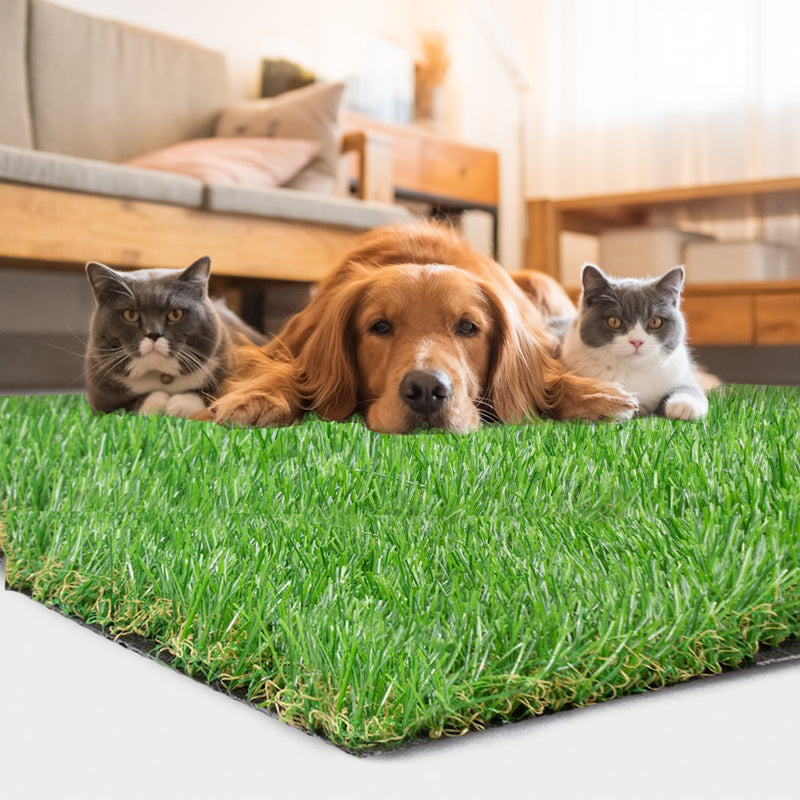Explore the Environmental Advantages of Opting for Synthetic Grass Solutions
The fostering of artificial grass remedies provides an engaging opportunity to address pressing ecological difficulties. By substantially decreasing water use and lessening the application of hazardous chemicals, these alternatives not just promote sustainable landscape design however likewise protect regional ecosystems.
Water Conservation Conveniences
Among the most considerable benefits of synthetic grass is its capability to conserve water. Conventional lawn yards need considerable watering, particularly in areas susceptible to drought or water constraints. In contrast, synthetic grass does not require watering, considerably reducing the general demand for water resources. This function is specifically helpful in deserts where water deficiency is a pressing problem.
By removing the requirement for routine watering, synthetic grass adds to sustainable landscape practices and helps reduce the environmental effect of extreme water consumption. The conservation of water prolongs to the reduction of overflow, which can lead to dirt disintegration and river air pollution.
Additionally, the installment of synthetic grass enables home owners and towns to assign water sources extra efficiently, concentrating on important usages such as drinking water and agriculture. The change towards man-made turf not only advertises responsible water usage yet additionally straightens with broader environmental objectives targeted at maintaining natural deposits.
As areas significantly focus on sustainability, the water preservation advantages of synthetic grass provide an engaging case for its fostering in business and property landscape design jobs.
Minimized Chemical Usage
The change to synthetic grass substantially lowers the reliance on chemical treatments typically utilized in natural yard maintenance. Traditional turf management usually entails the application of plant foods, herbicides, and chemicals to promote growth and control bugs. These chemicals can posture threats to human health and wellness, neighborhood wildlife, and the setting, adding to dirt and water contamination.
In comparison, synthetic grass eliminates the need for these dangerous materials. By decreasing the release of artificial substances into the environment, man-made grass promotes much healthier soil and water systems.
Additionally, the lack of chemical runoff connected with synthetic grass setups helps protect local waterways from pollution, sustaining water life and preserving biodiversity. Phoenix turf companies. As communities progressively prioritize sustainable techniques, selecting man-made turf offers a feasible service that lines up with environmental preservation objectives. Via this shift, building owners can enjoy lush environment-friendly rooms without jeopardizing ecological wellness, leading the way for an extra lasting future
Reduced Carbon Impact

Moreover, the setup of fabricated lawn can cause considerable water preservation. All-natural grass require considerable quantities of water for irrigation, which not just includes in the carbon impact related to water removal and therapy but also strains local water resources. On the other hand, synthetic grass requires very little maintenance, requiring no watering, thereby considerably decreasing water use and its associated energy expenses.
Additionally, the long life of synthetic grass adds to its lower carbon impact. With a life expectancy of as much as 15 years or even more, the demand for frequent substitutes is diminished, causing much less waste and reduced energy intake in production and taking care of traditional lawn choices. On the whole, artificial grass offers a lasting option for environmentally aware landscaping.
Environment Preservation
Habitat conservation is an essential factor to consider in the discussion over landscaping choices, specifically when contrasting synthetic grass to all-natural lawn. Natural grass yards frequently require comprehensive upkeep, consisting of using fertilizers, herbicides, and pesticides, which can adversely impact regional ecological communities. These chemicals can seep right into the soil and rivers, damaging indigenous flora and animals and disrupting neighborhood habitats.
Artificial turf eliminates the demand for unsafe chemicals, consequently safeguarding neighboring wildlife and maintaining the honesty of surrounding ecological communities. The go to this site setup of man-made lawn can lead to the conversion of previous grass areas right into even more biodiverse landscapes, such as pollinator yards or native plant locations, which can support neighborhood wild animals.
Ultimately, the transition to synthetic grass not just saves water and decreases upkeep initiatives but also fosters a much more unified connection in between human tasks and the natural setting, promoting habitat preservation in the process.
Long-Term Sustainability
Long-term sustainability is a vital element in evaluating the benefits of artificial lawn over conventional grass yards. Among the most significant benefits of man-made turf is its durability; it can last up to 15-20 years with marginal upkeep, whereas all-natural grass requires frequent reseeding and replacement. This longevity reduces the need for consistent sources, such as water, plant foods, check that and pesticides, which are important for keeping a healthy and balanced yard yard.
Additionally, synthetic grass contributes to a reduction in carbon discharges connected with yard treatment tools. Standard lawns commonly need gas-powered lawn mowers, trimmers, and blowers, all of which contribute to air contamination. Artificial turf companies phoenix. On the other hand, man-made grass gets rid of the demand for such devices, advertising a cleaner atmosphere
Furthermore, the manufacturing of synthetic grass increasingly uses recycled materials, improving its sustainability profile. As manufacturers adopt eco-friendly techniques, the ecological impact of artificial turf remains to reduce.

Verdict
The fostering of man-made grass services offers substantial ecological advantages, including substantial water conservation, reduced reliance on hazardous chemicals, and a lower carbon impact. Artificial lawn aids in protecting all-natural environments by minimizing land disturbance and promoting lasting sustainability through the use of resilient materials. Jointly, these variables underscore the possibility of artificial grass to add favorably to environmental health and supply a practical choice to standard landscape design practices in an increasingly resource-conscious world.
In comparison, synthetic lawn does not require watering, considerably decreasing the overall demand for water resources. By lessening the launch of artificial compounds into the environment, artificial grass promotes much healthier dirt and water systems.
Moreover, click for more info the installment of fabricated lawn can result in considerable water conservation. In contrast, man-made grass requires minimal upkeep, requiring no watering, thus significantly lowering water use and its linked energy costs.
